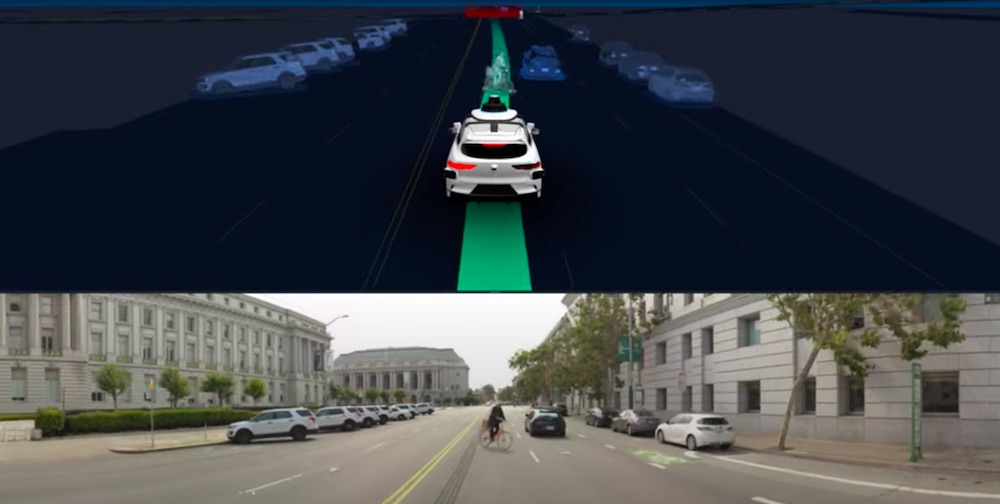|
Listen to this article  |
Kyle Vogt, co-founder, president and CTO of autonomous vehicle developer Cruise, has often discussed the difficulties of driving in San Francisco. Testing in the hardest places first, he said, means we’ll get to scale faster than starting with the easier ones.
Waymo has taken a different approach by initially focusing on friendly driving environments. For example, it’s been operating since late 2020 a Level 4 robotaxi service in a 5-square-mile radius of Chandler, Arizona. Waymo was testing in the area for years prior to commercially launching the service.
Earlier this year, however, Waymo ramped up testing in San Francisco. And now it’s released a video, which you can watch atop this page, showcasing the “typical yet dynamic events” the Waymo Driver autonomous driving technology faces on a daily basis in San Francisco.
You can’t actually see the car driving itself in the video, so we are taking Waymo at its word here. Some of the challenging situations in the video include a cyclist traveling against the flow of traffic cutting right in front of the vehicle; there’s a couple other instances where a pedestrian and cyclist cross in front of the car.
You’ll also see Waymo safely navigate a narrow, two-way street with a car traveling the opposite direction and other cars parked on both sides of the street. The video ends with a night scene where a utility worker walks out in front of the vehicle and towards a utility truck.
Waymo credits the sensors and algorithms in its autonomy stack for the autonomous driving capabilities. Waymo said its system can create point clouds for objects up to 300 meters away. Sensor fusion is also key. Waymo said its fifth-generation hardware uses machine learning for every aspect of the software stack – perception, behavior prediction, and planning.

A bicyclist cuts in front of a Waymo autonomous car in San Francisco. | Photo Credit: Waymo
“Sensor fusion allows us to amplify the advantages of each sensor. Lidar, for example, excels at providing depth information and detecting the 3D shape of objects, while cameras are important for picking out visual features, such as the color of a traffic signal or a temporary road sign, especially at longer distances,” Waymo wrote in a blog. “Meanwhile, radar is highly effective in bad weather and in scenarios when it’s crucial to track moving objects, such as a deer dashing out of a bush and onto the road.”
Waymo and Cruise both recently received permits to offer robotaxi rides to public passengers in California. Cruise’s permit allows five of its robotaxis to drive passengers around certain parts of San Francisco. Cruise vehicles are approved to operate between 10 PM and 6 AM at a maximum speed of 30 MPH. The California DMV is allowing Cruise to drive its robotaxis in light rain and fog. Cruise has been able to test autonomous vehicles on California’s public roads with a safety driver since 2015 and to test autonomous vehicles without a driver since October 2020.
Waymo’s permit allows it to operate its autonomous vehicles in certain parts of San Francisco and San Mateo counties. However, the vehicles must have human safety drivers behind the wheel. Waymo’s vehicles are approved to operate on public roads with a speed limit of no more than 65 MPH and can also operate in rain and light fog. The DMV didn’t specify a timeframe in which Waymo’s vehicles could operate.
Credit: Source link


Comments are closed.